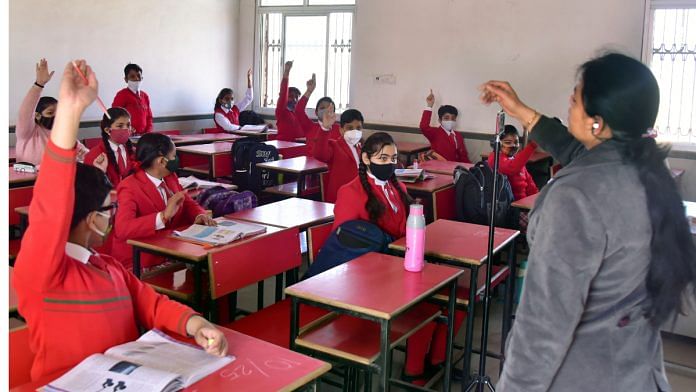New Delhi: The sixth serosurvey of Delhi estimates that nearly 90 per cent of the population already had antibodies against SARS-CoV-2 by October last year — either because they were exposed to the disease or because they had been vaccinated.
While the findings had been shared with the government in October, this is the first time that the full report has been publicly shared by the research team. The report was uploaded on medRxiv (a website where pre-print studies are shared) last month.
A team at the Maulana Azad Medical College collected blood samples from 27,811 participants across 280 wards in Delhi, between 24 September and 14 October last year. They found a total of 24,895, or 89.5 per cent of the samples, to be seropositive, that is positive for SARS-CoV-2 antibodies.
For the study, the researchers used a test that detects immunoglobulin G (IgG), the most common type of antibody circulating in the blood.
The findings of the sixth round of the serosurvey in Delhi indicate that nearly nine in ten individuals aged five years and above in the national capital had detectable SARS-CoV-2 antibodies, which on assay adjustment reflect near universal seropositivity. The highest seroprevalence was noted from East Delhi, where seroprevalence was 90.8 per cent.
The study, which is yet to be peer-reviewed, also looked at the difference in seroprevalence of vaccinated and unvaccinated people.
Among those surveyed, 27.3 per cent had not received the vaccine. The seroprevalence was 82 per cent in this section. Among those who had received one dose of the vaccine, seroprevalence was 95.1 per cent. Seroprevalence was 94.8 per cent among those who had received both doses of the vaccine.
According to the team, the seroprevalence in Delhi was higher in comparison to other Indian cities and states, but comparable with Mumbai, possibly because of the high severity of the second wave of the pandemic in these metropolitan cities. Mumbai was estimated to have a seroprevalence of 86.64 per cent.
Earlier studies of IgG SARS-CoV-2 antibodies in the Delhi population conducted in January last year had shown seroprevalence of just over 50 per cent. The increase in seroprevalence was due to both natural infection and vaccination, the team said.
Also read: From Goa to Maharashtra, what Covid deaths say about states’ non-communicable disease burden
‘Natural infection primary driver of immune response in many’
India started phase-wise vaccination against Covid in January 2021.
However, during the nine-month period (between the sixth survey and the one before in January), the seroprevalence in unvaccinated adults increased to 82 per cent from 50.3 per cent. In children aged five years and above, seroprevalence rose to 81.7 per cent from 52.4 per cent.
This indicates that natural infection was the primary driver of immune response in a large proportion of the population.
The seropositivity was also significantly higher in women compared to men, despite lower rates of vaccination in the former. This, according to the researchers, suggests an underlying biological pathway that can explain the difference.
Previous studies suggest antibodies to SARS-CoV-2 persist at least one year after natural infection conferring durable protection against reinfection or symptomatic disease .
“The proportion of seronegative vaccinated individuals in our study was very low even in those who had received only one dose of either (vaccine, Covishield and Covaxin),” the team noted.
The study also noted that there was very little difference in seroprevalence among people living in different types of settlements. Planned colonies and unauthorised settlements had seroprevalence of 90.1 and 90.2 per cent, respectively. Urban slums had a seroprevalence of 89 per cent, while seroprevalence in villages (Delhi’s urban villages) was the lowest at 87.9 per cent.
(Edited by Poulomi Banerjee)
Also read: Omicron is driving 3rd wave, but don’t use other countries’ data for Indian trends: CCMB chief



